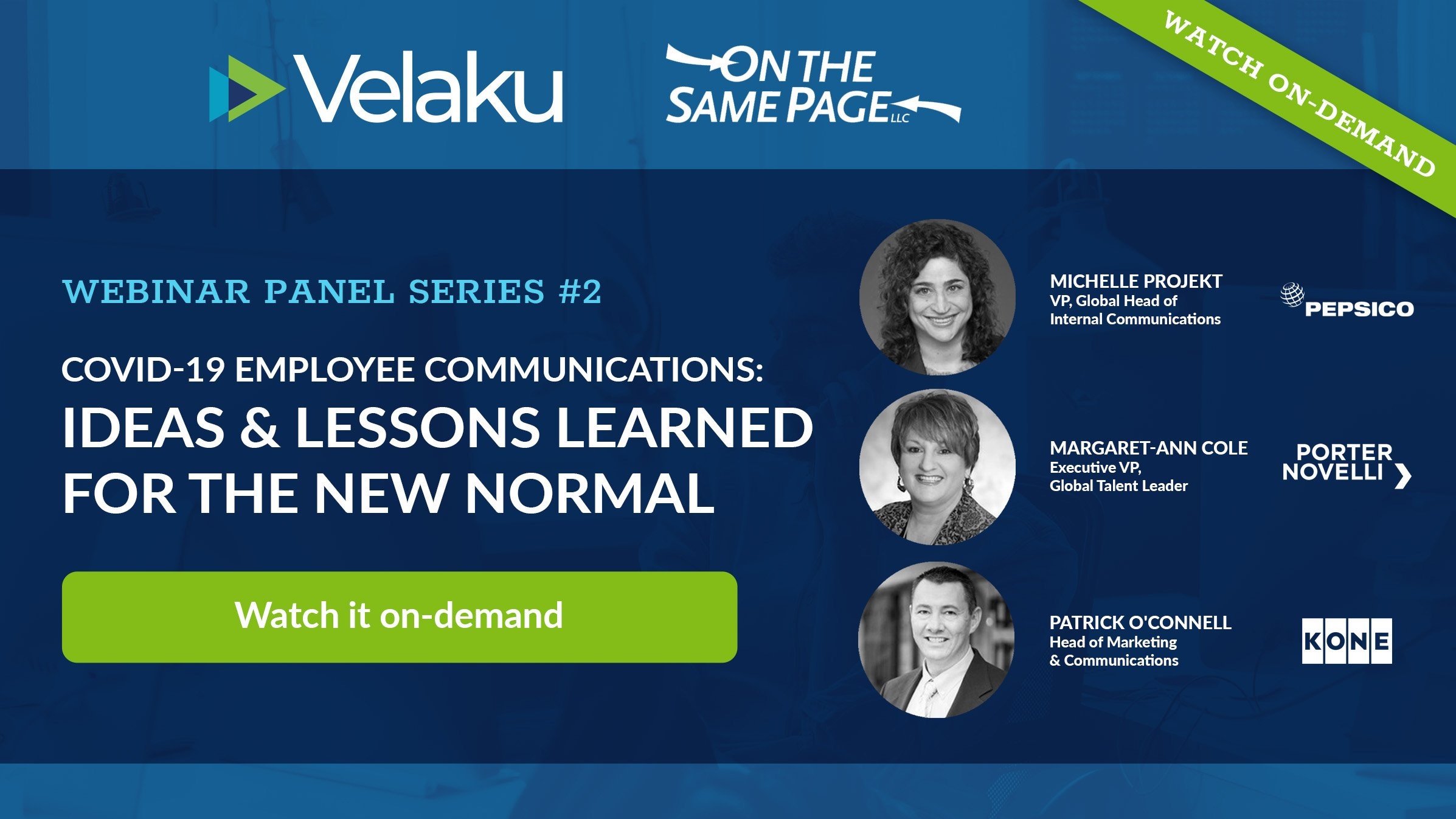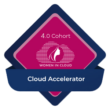In the second episode of our wildly popular webinar series “Ask the Experts”, co-hosted by the consulting firm On The Same Page, we had a few burning questions for the thought leaders in the employee communications community.
- What is the most important piece of advice for employee communications?
- What have you changed in the last two months and why?
- What is the one shift in thinking that has been the most successful?
The answers may surprise you.
Thanks to our powerhouse executives Michelle Projekt - VP, Global Head of Internal Communications at PepsiCo, Margaret-Ann Cole - EVP, Global Talent Leader, Porter Novelli and Patrick O'Connell - Head of Marketing & Communications, KONE Americas. Click here to watch the full webinar.
1. If you do nothing else when it comes to communications, do this.
During the webinar, the most important message from our three experts was that, if you do nothing else, make sure you are communicating with transparency, honesty, authenticity and frequency.
"...when information is unavailable or inconsistent, and when people feel unsure about what they know (or anyone knows), behavioral science points to an increased human desire for transparency, guidance, and making sense out of what has happened.” (McKinsey, A Leaders Guide: Communicating With teams, stakeholders and communities during COVID-19)
2. More is More.
All three of our panelists stressed the need for increased employee communication, increased awareness, and increased access - while using tools and channels that are easy, familiar and trusted to use.
As Patrick suggested, it’s best to keep it simple and short, especially for those on the front line. “In times of crisis”, he says, “there is a body of thought to try something new”. Instead he advises to use channels employees are familiar with, and that employees use often, but increase the frequency of your communications. The more people can be aware of content, and the easier it is to access on the channel or device of their choice, the more trust they’ll have and the more likely they are to be engaged.
At KONE Americas they’ve moved from a weekly email to a daily email. This email has been targeted and personalized to address the needs of their key audiences - field workers and work-from-home workers. For the work-from-home group, KONE Americas is using syndication tools to pull information together from across their Intranet, and then inserting it into interactive Vlogs. They’re also pulling together a single-source-of-truth about all things COVID that can be easily accessed in the intranet - but awareness of this is distributed across various communication channels.
For KONE’s field workers - many of whom are working to maintain and repair KONE elevators in mission-critical facilities like hospitals, nursing homes, and manufacturing plants where employees are seeing the emails primarily on their phones, messaging is shorter and to the point, and focused on topics highly relevant to that population, like safety reminders and changes to operating protocols.
When it comes to critical issues like speed, accuracy, access and presentation, Margaret-Ann mentioned a very important point: “There is more tolerance for imperfection” said Margaret-Ann, gesturing to her art-filled home office, “allowing employee communications to be faster.” People have come to expect more communications, more often, with credibility that’s derived from higher levels of leadership, and with more interaction and more transparency than before. Simply put, employees would rather get credible content, frequently and with seamless access, regardless of whether it looks ‘professional’ - as long as it’s perceived as trusted, valid and authentic.
Watch What Happened.
Click to See the Full Webinar.
3. Stay Agile.
The communication needs of your employees will continue to be significant - driven by continuous change for the foreseeable future. All three of our panelists mentioned that they had shifted their communications strategies and tactics often as the crisis continued to change across their global organizations.
Porter Novelli’s employees, like those at most companies, are experiencing stress and rising fatigue from “the crisis, the news, the constant pressure and worry about loved ones”. Margaret-Ann is especially concerned about those employees dealing with the additional demands of parenting or caring for a dependent. In response, Porter Novelli has been proactive about providing employees with the benefits, tools and interactions they need not just to do their jobs, but to keep up their well-being.
PepsiCo has seen a similar shift in the course of just the last month.
Unlike company responses to crises caused by natural disasters, where the bulk of non-company specific communication comes from government or non-company sources, PepsiCo found that their employees were looking to the company for communications on facts surrounding the virus, so much so that they created an “ask the doctor” series to help inform employees about all things COVID. This focus has now expanded, primarily in response to inquiries, and PepsiCo is now providing content around personal finance and how to cope with bereavement issues and stress specifically driven by the current crisis.
This expansion of focus on content and information well beyond the traditional bounds of topics that are company-specific, or workplace-specific is outlined in a recent article by McKinsey that described how communicators should be adjusting their communication mix as employees go through five distinct stages of need in this crisis.
For example, as employees evolve from feeling anxious and confused to uneasy and worn down, communicators should anticipate the need for communication that brings clarity to long-term plans, positive stories and chances to connect. (see illustration).
The third phase of this crisis stage, where the focus shifts to a need for a change, and a desire to understand what will happen when things return “to normal” is something we asked our panelists to address. You can read their responses in the next blog in the series “Do We Know What the “New Normal” Will Look Like?”
What’s interesting about the McKinsey perspective is that it’s not able, understandably, to factor the specific time frame for the various stages - nor factor the massive level of ongoing change that will permeate peoples’ lives - within and outside the workplace.
We see this change already becoming a challenge, as simple things that were taken for granted have not only changed, but continue to change over and over again.
Velaku dramatically improves the employee experience by engaging employees with content that appears right in the flow of their work. The results are personalized, contextualized and seamless for the employee. Visit www.velaku.com or contact info@velaku.com to schedule a demo today.






